-
EXECUTIVE SUMMARY
-
1.1.
-
Market Overview
-
Key Findings
-
Market Segmentation
-
1.4.
-
Competitive Landscape
-
Challenges and Opportunities
-
Future
-
Outlook
-
MARKET INTRODUCTION
-
Definition
-
Scope of the study
- Research Objective
- Assumption
- Limitations
-
RESEARCH METHODOLOGY
-
Overview
-
3.2.
-
Data Mining
-
Secondary Research
-
Primary Research
- Breakdown of Primary
-
3.4.1.
-
Primary Interviews and Information Gathering Process
-
Respondents
-
Forecasting Model
-
Market Size Estimation
- Top-Down Approach
-
3.6.1.
-
Bottom-Up Approach
-
Data Triangulation
-
Validation
-
MARKET DYNAMICS
-
Overview
-
Drivers
-
Restraints
-
Opportunities
-
MARKET
-
FACTOR ANALYSIS
-
Value chain Analysis
-
Porter''s Five Forces
- Bargaining Power of Suppliers
- Bargaining Power
- Threat of New Entrants
- Threat of Substitutes
- Intensity of Rivalry
-
Analysis
-
of Buyers
-
COVID-19 Impact Analysis
- Regional Impact
- Opportunity and
-
5.3.1.
-
Market Impact Analysis
-
Threat Analysis
-
Fixed Asset Management Software Market,
-
BY Deployment Type (USD Billion)
-
On-Premises
-
Cloud-Based
-
Hybrid
-
Fixed Asset Management Software Market, BY End Use Industry
-
(USD Billion)
-
Manufacturing
-
Retail
-
Healthcare
-
Construction
-
Telecommunications
-
Fixed Asset Management
-
Software Market, BY Organization Size (USD Billion)
-
Large Enterprises
-
Small and Medium Enterprises
-
Fixed Asset Management Software
-
Market, BY Functionality (USD Billion)
-
Asset Tracking
-
Inventory
-
Management
-
Compliance Management
-
Reporting and Analytics
-
Fixed Asset Management Software Market, BY Regional (USD Billion)
-
10.1.
-
North America
-
10.2.1.
-
Germany
-
10.2.5.
-
Italy
-
10.3.1.
-
China
-
10.3.5.
-
Malaysia
-
10.4.3.
-
Argentina
-
Countries
-
US
-
Canada
-
Europe
- UK
- France
- Russia
- Spain
- Rest of Europe
-
APAC
- India
- Japan
- South Korea
- Thailand
- Indonesia
- Rest of APAC
-
South America
- Brazil
- Mexico
- Rest of South America
-
MEA
- GCC
- South Africa
- Rest of MEA
-
Competitive Landscape
-
Overview
-
Competitive Analysis
-
Market share Analysis
-
Major Growth Strategy in the Fixed
-
Asset Management Software Market
-
Competitive Benchmarking
-
11.6.
-
Leading Players in Terms of Number of Developments in the Fixed Asset Management
-
Software Market
-
Key developments and growth strategies
- Merger & Acquisitions
- Joint Ventures
-
11.7.1.
-
New Product Launch/Service Deployment
-
Major Players Financial Matrix
- Major Players R&D Expenditure. 2023
-
11.8.1.
-
Sales and Operating Income
-
Company Profiles
-
Katanacorp
- Financial Overview
- Products Offered
- Key Developments
- SWOT
- Key Strategies
-
Analysis
-
FAMIS
- Financial
- Products Offered
- Key Developments
- Key Strategies
-
Overview
-
12.2.4.
-
SWOT Analysis
-
Tango Equipment
- Products Offered
- Key Developments
- SWOT Analysis
- Key Strategies
-
12.3.1.
-
Financial Overview
-
SAP
- Products Offered
- Key Developments
- SWOT Analysis
- Key Strategies
-
12.4.1.
-
Financial Overview
-
IBM
- Products Offered
- Key Developments
- SWOT Analysis
- Key Strategies
-
12.5.1.
-
Financial Overview
-
Oracle
- Financial Overview
- Products Offered
- Key Developments
- SWOT Analysis
- Key Strategies
-
Clyde
- Products Offered
- Key Developments
- SWOT Analysis
- Key Strategies
-
12.7.1.
-
Financial Overview
-
Sage
- Products Offered
- Key Developments
- SWOT Analysis
- Key Strategies
-
12.8.1.
-
Financial Overview
-
Microsoft
- Financial Overview
- Products Offered
- Key Developments
- SWOT Analysis
- Key Strategies
-
Infor
- Financial Overview
- Products Offered
- Key
- SWOT Analysis
- Key Strategies
- Financial Overview
- Products Offered
- Key Developments
- SWOT Analysis
- Key Strategies
-
Developments
-
12.11.
-
Asset Panda
-
CHEQROOM
- Financial Overview
- Products
- Key Developments
- SWOT Analysis
-
Offered
-
12.12.5.
-
Key Strategies
-
Viewpoint
- Financial Overview
- Key Developments
- SWOT Analysis
- Key Strategies
-
12.13.2.
-
Products Offered
-
NetSuite
- Financial Overview
- Products Offered
- Key Developments
- SWOT
- Key Strategies
-
Analysis
-
AssetWorks
- Financial
- Products Offered
- Key Developments
- Key Strategies
-
Overview
-
12.15.4.
-
SWOT Analysis
-
Appendix
-
References
-
Related Reports
-
LIST Of tables
-
LIST OF ASSUMPTIONS
-
North America Fixed Asset Management Software Market SIZE ESTIMATES
-
& FORECAST, BY DEPLOYMENT TYPE, 2019-2032 (USD Billions)
-
North
-
America Fixed Asset Management Software Market SIZE ESTIMATES & FORECAST, BY
-
END USE INDUSTRY, 2019-2032 (USD Billions)
-
North America Fixed Asset
-
Management Software Market SIZE ESTIMATES & FORECAST, BY ORGANIZATION SIZE,
-
North America Fixed Asset Management Software
-
Market SIZE ESTIMATES & FORECAST, BY FUNCTIONALITY, 2019-2032 (USD Billions)
-
North America Fixed Asset Management Software Market SIZE ESTIMATES
-
& FORECAST, BY REGIONAL, 2019-2032 (USD Billions)
-
US Fixed Asset
-
Management Software Market SIZE ESTIMATES & FORECAST, BY DEPLOYMENT TYPE, 2019-2032
-
(USD Billions)
-
US Fixed Asset Management Software Market SIZE ESTIMATES
-
& FORECAST, BY END USE INDUSTRY, 2019-2032 (USD Billions)
-
US
-
Fixed Asset Management Software Market SIZE ESTIMATES & FORECAST, BY ORGANIZATION
-
SIZE, 2019-2032 (USD Billions)
-
US Fixed Asset Management Software
-
Market SIZE ESTIMATES & FORECAST, BY FUNCTIONALITY, 2019-2032 (USD Billions)
-
US Fixed Asset Management Software Market SIZE ESTIMATES & FORECAST,
-
BY REGIONAL, 2019-2032 (USD Billions)
-
Canada Fixed Asset Management
-
Software Market SIZE ESTIMATES & FORECAST, BY DEPLOYMENT TYPE, 2019-2032 (USD
-
Billions)
-
Canada Fixed Asset Management Software Market SIZE ESTIMATES
-
& FORECAST, BY END USE INDUSTRY, 2019-2032 (USD Billions)
-
Canada
-
Fixed Asset Management Software Market SIZE ESTIMATES & FORECAST, BY ORGANIZATION
-
SIZE, 2019-2032 (USD Billions)
-
Canada Fixed Asset Management Software
-
Market SIZE ESTIMATES & FORECAST, BY FUNCTIONALITY, 2019-2032 (USD Billions)
-
Canada Fixed Asset Management Software Market SIZE ESTIMATES &
-
FORECAST, BY REGIONAL, 2019-2032 (USD Billions)
-
Europe Fixed Asset
-
Management Software Market SIZE ESTIMATES & FORECAST, BY DEPLOYMENT TYPE, 2019-2032
-
(USD Billions)
-
Europe Fixed Asset Management Software Market SIZE
-
ESTIMATES & FORECAST, BY END USE INDUSTRY, 2019-2032 (USD Billions)
-
Table
-
Europe Fixed Asset Management Software Market SIZE ESTIMATES & FORECAST,
-
BY ORGANIZATION SIZE, 2019-2032 (USD Billions)
-
Europe Fixed Asset
-
Management Software Market SIZE ESTIMATES & FORECAST, BY FUNCTIONALITY, 2019-2032
-
(USD Billions)
-
Europe Fixed Asset Management Software Market SIZE
-
ESTIMATES & FORECAST, BY REGIONAL, 2019-2032 (USD Billions)
-
Table 22.
-
Germany Fixed Asset Management Software Market SIZE ESTIMATES & FORECAST, BY
-
DEPLOYMENT TYPE, 2019-2032 (USD Billions)
-
Germany Fixed Asset Management
-
Software Market SIZE ESTIMATES & FORECAST, BY END USE INDUSTRY, 2019-2032 (USD
-
Billions)
-
Germany Fixed Asset Management Software Market SIZE ESTIMATES
-
& FORECAST, BY ORGANIZATION SIZE, 2019-2032 (USD Billions)
-
Germany
-
Fixed Asset Management Software Market SIZE ESTIMATES & FORECAST, BY FUNCTIONALITY,
-
Germany Fixed Asset Management Software
-
Market SIZE ESTIMATES & FORECAST, BY REGIONAL, 2019-2032 (USD Billions)
-
UK Fixed Asset Management Software Market SIZE ESTIMATES & FORECAST,
-
BY DEPLOYMENT TYPE, 2019-2032 (USD Billions)
-
UK Fixed Asset Management
-
Software Market SIZE ESTIMATES & FORECAST, BY END USE INDUSTRY, 2019-2032 (USD
-
Billions)
-
UK Fixed Asset Management Software Market SIZE ESTIMATES
-
& FORECAST, BY ORGANIZATION SIZE, 2019-2032 (USD Billions)
-
UK
-
Fixed Asset Management Software Market SIZE ESTIMATES & FORECAST, BY FUNCTIONALITY,
-
UK Fixed Asset Management Software Market
-
SIZE ESTIMATES & FORECAST, BY REGIONAL, 2019-2032 (USD Billions)
-
Table
-
France Fixed Asset Management Software Market SIZE ESTIMATES & FORECAST,
-
BY DEPLOYMENT TYPE, 2019-2032 (USD Billions)
-
France Fixed Asset
-
Management Software Market SIZE ESTIMATES & FORECAST, BY END USE INDUSTRY, 2019-2032
-
(USD Billions)
-
France Fixed Asset Management Software Market SIZE
-
ESTIMATES & FORECAST, BY ORGANIZATION SIZE, 2019-2032 (USD Billions)
-
Table
-
France Fixed Asset Management Software Market SIZE ESTIMATES & FORECAST,
-
BY FUNCTIONALITY, 2019-2032 (USD Billions)
-
France Fixed Asset Management
-
Software Market SIZE ESTIMATES & FORECAST, BY REGIONAL, 2019-2032 (USD Billions)
-
Russia Fixed Asset Management Software Market SIZE ESTIMATES &
-
FORECAST, BY DEPLOYMENT TYPE, 2019-2032 (USD Billions)
-
Russia Fixed
-
Asset Management Software Market SIZE ESTIMATES & FORECAST, BY END USE INDUSTRY,
-
Russia Fixed Asset Management Software
-
Market SIZE ESTIMATES & FORECAST, BY ORGANIZATION SIZE, 2019-2032 (USD Billions)
-
Russia Fixed Asset Management Software Market SIZE ESTIMATES &
-
FORECAST, BY FUNCTIONALITY, 2019-2032 (USD Billions)
-
Russia Fixed
-
Asset Management Software Market SIZE ESTIMATES & FORECAST, BY REGIONAL, 2019-2032
-
(USD Billions)
-
Italy Fixed Asset Management Software Market SIZE
-
ESTIMATES & FORECAST, BY DEPLOYMENT TYPE, 2019-2032 (USD Billions)
-
Table
-
Italy Fixed Asset Management Software Market SIZE ESTIMATES & FORECAST,
-
BY END USE INDUSTRY, 2019-2032 (USD Billions)
-
Italy Fixed Asset
-
Management Software Market SIZE ESTIMATES & FORECAST, BY ORGANIZATION SIZE,
-
Italy Fixed Asset Management Software Market
-
SIZE ESTIMATES & FORECAST, BY FUNCTIONALITY, 2019-2032 (USD Billions)
-
Table
-
Italy Fixed Asset Management Software Market SIZE ESTIMATES & FORECAST,
-
BY REGIONAL, 2019-2032 (USD Billions)
-
Spain Fixed Asset Management
-
Software Market SIZE ESTIMATES & FORECAST, BY DEPLOYMENT TYPE, 2019-2032 (USD
-
Billions)
-
Spain Fixed Asset Management Software Market SIZE ESTIMATES
-
& FORECAST, BY END USE INDUSTRY, 2019-2032 (USD Billions)
-
Spain
-
Fixed Asset Management Software Market SIZE ESTIMATES & FORECAST, BY ORGANIZATION
-
SIZE, 2019-2032 (USD Billions)
-
Spain Fixed Asset Management Software
-
Market SIZE ESTIMATES & FORECAST, BY FUNCTIONALITY, 2019-2032 (USD Billions)
-
Spain Fixed Asset Management Software Market SIZE ESTIMATES &
-
FORECAST, BY REGIONAL, 2019-2032 (USD Billions)
-
Rest of Europe Fixed
-
Asset Management Software Market SIZE ESTIMATES & FORECAST, BY DEPLOYMENT TYPE,
-
Rest of Europe Fixed Asset Management Software
-
Market SIZE ESTIMATES & FORECAST, BY END USE INDUSTRY, 2019-2032 (USD Billions)
-
Rest of Europe Fixed Asset Management Software Market SIZE ESTIMATES
-
& FORECAST, BY ORGANIZATION SIZE, 2019-2032 (USD Billions)
-
Rest
-
of Europe Fixed Asset Management Software Market SIZE ESTIMATES & FORECAST,
-
BY FUNCTIONALITY, 2019-2032 (USD Billions)
-
Rest of Europe Fixed
-
Asset Management Software Market SIZE ESTIMATES & FORECAST, BY REGIONAL, 2019-2032
-
(USD Billions)
-
APAC Fixed Asset Management Software Market SIZE
-
ESTIMATES & FORECAST, BY DEPLOYMENT TYPE, 2019-2032 (USD Billions)
-
Table
-
APAC Fixed Asset Management Software Market SIZE ESTIMATES & FORECAST, BY
-
END USE INDUSTRY, 2019-2032 (USD Billions)
-
APAC Fixed Asset Management
-
Software Market SIZE ESTIMATES & FORECAST, BY ORGANIZATION SIZE, 2019-2032 (USD
-
Billions)
-
APAC Fixed Asset Management Software Market SIZE ESTIMATES
-
& FORECAST, BY FUNCTIONALITY, 2019-2032 (USD Billions)
-
APAC
-
Fixed Asset Management Software Market SIZE ESTIMATES & FORECAST, BY REGIONAL,
-
China Fixed Asset Management Software Market
-
SIZE ESTIMATES & FORECAST, BY DEPLOYMENT TYPE, 2019-2032 (USD Billions)
-
China Fixed Asset Management Software Market SIZE ESTIMATES & FORECAST,
-
BY END USE INDUSTRY, 2019-2032 (USD Billions)
-
China Fixed Asset
-
Management Software Market SIZE ESTIMATES & FORECAST, BY ORGANIZATION SIZE,
-
China Fixed Asset Management Software Market
-
SIZE ESTIMATES & FORECAST, BY FUNCTIONALITY, 2019-2032 (USD Billions)
-
Table
-
China Fixed Asset Management Software Market SIZE ESTIMATES & FORECAST,
-
BY REGIONAL, 2019-2032 (USD Billions)
-
India Fixed Asset Management
-
Software Market SIZE ESTIMATES & FORECAST, BY DEPLOYMENT TYPE, 2019-2032 (USD
-
Billions)
-
India Fixed Asset Management Software Market SIZE ESTIMATES
-
& FORECAST, BY END USE INDUSTRY, 2019-2032 (USD Billions)
-
India
-
Fixed Asset Management Software Market SIZE ESTIMATES & FORECAST, BY ORGANIZATION
-
SIZE, 2019-2032 (USD Billions)
-
India Fixed Asset Management Software
-
Market SIZE ESTIMATES & FORECAST, BY FUNCTIONALITY, 2019-2032 (USD Billions)
-
India Fixed Asset Management Software Market SIZE ESTIMATES &
-
FORECAST, BY REGIONAL, 2019-2032 (USD Billions)
-
Japan Fixed Asset
-
Management Software Market SIZE ESTIMATES & FORECAST, BY DEPLOYMENT TYPE, 2019-2032
-
(USD Billions)
-
Japan Fixed Asset Management Software Market SIZE
-
ESTIMATES & FORECAST, BY END USE INDUSTRY, 2019-2032 (USD Billions)
-
Table
-
Japan Fixed Asset Management Software Market SIZE ESTIMATES & FORECAST,
-
BY ORGANIZATION SIZE, 2019-2032 (USD Billions)
-
Japan Fixed Asset
-
Management Software Market SIZE ESTIMATES & FORECAST, BY FUNCTIONALITY, 2019-2032
-
(USD Billions)
-
Japan Fixed Asset Management Software Market SIZE
-
ESTIMATES & FORECAST, BY REGIONAL, 2019-2032 (USD Billions)
-
Table 77.
-
South Korea Fixed Asset Management Software Market SIZE ESTIMATES & FORECAST,
-
BY DEPLOYMENT TYPE, 2019-2032 (USD Billions)
-
South Korea Fixed Asset
-
Management Software Market SIZE ESTIMATES & FORECAST, BY END USE INDUSTRY, 2019-2032
-
(USD Billions)
-
South Korea Fixed Asset Management Software Market
-
SIZE ESTIMATES & FORECAST, BY ORGANIZATION SIZE, 2019-2032 (USD Billions)
-
South Korea Fixed Asset Management Software Market SIZE ESTIMATES &
-
FORECAST, BY FUNCTIONALITY, 2019-2032 (USD Billions)
-
South Korea
-
Fixed Asset Management Software Market SIZE ESTIMATES & FORECAST, BY REGIONAL,
-
Malaysia Fixed Asset Management Software
-
Market SIZE ESTIMATES & FORECAST, BY DEPLOYMENT TYPE, 2019-2032 (USD Billions)
-
Malaysia Fixed Asset Management Software Market SIZE ESTIMATES &
-
FORECAST, BY END USE INDUSTRY, 2019-2032 (USD Billions)
-
Malaysia
-
Fixed Asset Management Software Market SIZE ESTIMATES & FORECAST, BY ORGANIZATION
-
SIZE, 2019-2032 (USD Billions)
-
Malaysia Fixed Asset Management Software
-
Market SIZE ESTIMATES & FORECAST, BY FUNCTIONALITY, 2019-2032 (USD Billions)
-
Malaysia Fixed Asset Management Software Market SIZE ESTIMATES &
-
FORECAST, BY REGIONAL, 2019-2032 (USD Billions)
-
Thailand Fixed Asset
-
Management Software Market SIZE ESTIMATES & FORECAST, BY DEPLOYMENT TYPE, 2019-2032
-
(USD Billions)
-
Thailand Fixed Asset Management Software Market SIZE
-
ESTIMATES & FORECAST, BY END USE INDUSTRY, 2019-2032 (USD Billions)
-
Table
-
Thailand Fixed Asset Management Software Market SIZE ESTIMATES & FORECAST,
-
BY ORGANIZATION SIZE, 2019-2032 (USD Billions)
-
Thailand Fixed Asset
-
Management Software Market SIZE ESTIMATES & FORECAST, BY FUNCTIONALITY, 2019-2032
-
(USD Billions)
-
Thailand Fixed Asset Management Software Market SIZE
-
ESTIMATES & FORECAST, BY REGIONAL, 2019-2032 (USD Billions)
-
Table 92.
-
Indonesia Fixed Asset Management Software Market SIZE ESTIMATES & FORECAST,
-
BY DEPLOYMENT TYPE, 2019-2032 (USD Billions)
-
Indonesia Fixed Asset
-
Management Software Market SIZE ESTIMATES & FORECAST, BY END USE INDUSTRY, 2019-2032
-
(USD Billions)
-
Indonesia Fixed Asset Management Software Market
-
SIZE ESTIMATES & FORECAST, BY ORGANIZATION SIZE, 2019-2032 (USD Billions)
-
Indonesia Fixed Asset Management Software Market SIZE ESTIMATES &
-
FORECAST, BY FUNCTIONALITY, 2019-2032 (USD Billions)
-
Indonesia Fixed
-
Asset Management Software Market SIZE ESTIMATES & FORECAST, BY REGIONAL, 2019-2032
-
(USD Billions)
-
Rest of APAC Fixed Asset Management Software Market
-
SIZE ESTIMATES & FORECAST, BY DEPLOYMENT TYPE, 2019-2032 (USD Billions)
-
Rest of APAC Fixed Asset Management Software Market SIZE ESTIMATES &
-
FORECAST, BY END USE INDUSTRY, 2019-2032 (USD Billions)
-
Rest of
-
APAC Fixed Asset Management Software Market SIZE ESTIMATES & FORECAST, BY ORGANIZATION
-
SIZE, 2019-2032 (USD Billions)
-
Rest of APAC Fixed Asset Management
-
Software Market SIZE ESTIMATES & FORECAST, BY FUNCTIONALITY, 2019-2032 (USD
-
Billions)
-
Rest of APAC Fixed Asset Management Software Market SIZE
-
ESTIMATES & FORECAST, BY REGIONAL, 2019-2032 (USD Billions)
-
Table 102.
-
South America Fixed Asset Management Software Market SIZE ESTIMATES & FORECAST,
-
BY DEPLOYMENT TYPE, 2019-2032 (USD Billions)
-
South America Fixed
-
Asset Management Software Market SIZE ESTIMATES & FORECAST, BY END USE INDUSTRY,
-
South America Fixed Asset Management Software
-
Market SIZE ESTIMATES & FORECAST, BY ORGANIZATION SIZE, 2019-2032 (USD Billions)
-
South America Fixed Asset Management Software Market SIZE ESTIMATES
-
& FORECAST, BY FUNCTIONALITY, 2019-2032 (USD Billions)
-
South
-
America Fixed Asset Management Software Market SIZE ESTIMATES & FORECAST, BY
-
REGIONAL, 2019-2032 (USD Billions)
-
Brazil Fixed Asset Management
-
Software Market SIZE ESTIMATES & FORECAST, BY DEPLOYMENT TYPE, 2019-2032 (USD
-
Billions)
-
Brazil Fixed Asset Management Software Market SIZE ESTIMATES
-
& FORECAST, BY END USE INDUSTRY, 2019-2032 (USD Billions)
-
Brazil
-
Fixed Asset Management Software Market SIZE ESTIMATES & FORECAST, BY ORGANIZATION
-
SIZE, 2019-2032 (USD Billions)
-
Brazil Fixed Asset Management Software
-
Market SIZE ESTIMATES & FORECAST, BY FUNCTIONALITY, 2019-2032 (USD Billions)
-
Brazil Fixed Asset Management Software Market SIZE ESTIMATES &
-
FORECAST, BY REGIONAL, 2019-2032 (USD Billions)
-
Mexico Fixed Asset
-
Management Software Market SIZE ESTIMATES & FORECAST, BY DEPLOYMENT TYPE, 2019-2032
-
(USD Billions)
-
Mexico Fixed Asset Management Software Market SIZE
-
ESTIMATES & FORECAST, BY END USE INDUSTRY, 2019-2032 (USD Billions)
-
Table
-
Mexico Fixed Asset Management Software Market SIZE ESTIMATES & FORECAST,
-
BY ORGANIZATION SIZE, 2019-2032 (USD Billions)
-
Mexico Fixed Asset
-
Management Software Market SIZE ESTIMATES & FORECAST, BY FUNCTIONALITY, 2019-2032
-
(USD Billions)
-
Mexico Fixed Asset Management Software Market SIZE
-
ESTIMATES & FORECAST, BY REGIONAL, 2019-2032 (USD Billions)
-
Table 117.
-
Argentina Fixed Asset Management Software Market SIZE ESTIMATES & FORECAST,
-
BY DEPLOYMENT TYPE, 2019-2032 (USD Billions)
-
Argentina Fixed Asset
-
Management Software Market SIZE ESTIMATES & FORECAST, BY END USE INDUSTRY, 2019-2032
-
(USD Billions)
-
Argentina Fixed Asset Management Software Market
-
SIZE ESTIMATES & FORECAST, BY ORGANIZATION SIZE, 2019-2032 (USD Billions)
-
Argentina Fixed Asset Management Software Market SIZE ESTIMATES &
-
FORECAST, BY FUNCTIONALITY, 2019-2032 (USD Billions)
-
Argentina
-
Fixed Asset Management Software Market SIZE ESTIMATES & FORECAST, BY REGIONAL,
-
Rest of South America Fixed Asset Management
-
Software Market SIZE ESTIMATES & FORECAST, BY DEPLOYMENT TYPE, 2019-2032 (USD
-
Billions)
-
Rest of South America Fixed Asset Management Software
-
Market SIZE ESTIMATES & FORECAST, BY END USE INDUSTRY, 2019-2032 (USD Billions)
-
Rest of South America Fixed Asset Management Software Market SIZE
-
ESTIMATES & FORECAST, BY ORGANIZATION SIZE, 2019-2032 (USD Billions)
-
Table
-
Rest of South America Fixed Asset Management Software Market SIZE ESTIMATES
-
& FORECAST, BY FUNCTIONALITY, 2019-2032 (USD Billions)
-
Rest
-
of South America Fixed Asset Management Software Market SIZE ESTIMATES & FORECAST,
-
BY REGIONAL, 2019-2032 (USD Billions)
-
MEA Fixed Asset Management
-
Software Market SIZE ESTIMATES & FORECAST, BY DEPLOYMENT TYPE, 2019-2032 (USD
-
Billions)
-
MEA Fixed Asset Management Software Market SIZE ESTIMATES
-
& FORECAST, BY END USE INDUSTRY, 2019-2032 (USD Billions)
-
MEA
-
Fixed Asset Management Software Market SIZE ESTIMATES & FORECAST, BY ORGANIZATION
-
SIZE, 2019-2032 (USD Billions)
-
MEA Fixed Asset Management Software
-
Market SIZE ESTIMATES & FORECAST, BY FUNCTIONALITY, 2019-2032 (USD Billions)
-
MEA Fixed Asset Management Software Market SIZE ESTIMATES &
-
FORECAST, BY REGIONAL, 2019-2032 (USD Billions)
-
GCC Countries Fixed
-
Asset Management Software Market SIZE ESTIMATES & FORECAST, BY DEPLOYMENT TYPE,
-
GCC Countries Fixed Asset Management Software
-
Market SIZE ESTIMATES & FORECAST, BY END USE INDUSTRY, 2019-2032 (USD Billions)
-
GCC Countries Fixed Asset Management Software Market SIZE ESTIMATES
-
& FORECAST, BY ORGANIZATION SIZE, 2019-2032 (USD Billions)
-
Table 135.
-
GCC Countries Fixed Asset Management Software Market SIZE ESTIMATES & FORECAST,
-
BY FUNCTIONALITY, 2019-2032 (USD Billions)
-
GCC Countries Fixed
-
Asset Management Software Market SIZE ESTIMATES & FORECAST, BY REGIONAL, 2019-2032
-
(USD Billions)
-
South Africa Fixed Asset Management Software Market
-
SIZE ESTIMATES & FORECAST, BY DEPLOYMENT TYPE, 2019-2032 (USD Billions)
-
South Africa Fixed Asset Management Software Market SIZE ESTIMATES
-
& FORECAST, BY END USE INDUSTRY, 2019-2032 (USD Billions)
-
South
-
Africa Fixed Asset Management Software Market SIZE ESTIMATES & FORECAST, BY
-
ORGANIZATION SIZE, 2019-2032 (USD Billions)
-
South Africa Fixed
-
Asset Management Software Market SIZE ESTIMATES & FORECAST, BY FUNCTIONALITY,
-
South Africa Fixed Asset Management Software
-
Market SIZE ESTIMATES & FORECAST, BY REGIONAL, 2019-2032 (USD Billions)
-
Rest of MEA Fixed Asset Management Software Market SIZE ESTIMATES &
-
FORECAST, BY DEPLOYMENT TYPE, 2019-2032 (USD Billions)
-
Rest of
-
MEA Fixed Asset Management Software Market SIZE ESTIMATES & FORECAST, BY END
-
USE INDUSTRY, 2019-2032 (USD Billions)
-
Rest of MEA Fixed Asset
-
Management Software Market SIZE ESTIMATES & FORECAST, BY ORGANIZATION SIZE,
-
Rest of MEA Fixed Asset Management Software
-
Market SIZE ESTIMATES & FORECAST, BY FUNCTIONALITY, 2019-2032 (USD Billions)
-
Rest of MEA Fixed Asset Management Software Market SIZE ESTIMATES
-
& FORECAST, BY REGIONAL, 2019-2032 (USD Billions)
-
PRODUCT LAUNCH/PRODUCT
-
DEVELOPMENT/APPROVAL
-
ACQUISITION/PARTNERSHIP
-
LIST Of
-
figures
-
MARKET SYNOPSIS
-
NORTH AMERICA FIXED
-
ASSET MANAGEMENT SOFTWARE MARKET ANALYSIS
-
US FIXED ASSET MANAGEMENT
-
SOFTWARE MARKET ANALYSIS BY DEPLOYMENT TYPE
-
US FIXED ASSET MANAGEMENT
-
SOFTWARE MARKET ANALYSIS BY END USE INDUSTRY
-
US FIXED ASSET MANAGEMENT
-
SOFTWARE MARKET ANALYSIS BY ORGANIZATION SIZE
-
US FIXED ASSET MANAGEMENT
-
SOFTWARE MARKET ANALYSIS BY FUNCTIONALITY
-
US FIXED ASSET MANAGEMENT
-
SOFTWARE MARKET ANALYSIS BY REGIONAL
-
CANADA FIXED ASSET MANAGEMENT
-
SOFTWARE MARKET ANALYSIS BY DEPLOYMENT TYPE
-
CANADA FIXED ASSET MANAGEMENT
-
SOFTWARE MARKET ANALYSIS BY END USE INDUSTRY
-
CANADA FIXED ASSET
-
MANAGEMENT SOFTWARE MARKET ANALYSIS BY ORGANIZATION SIZE
-
CANADA
-
FIXED ASSET MANAGEMENT SOFTWARE MARKET ANALYSIS BY FUNCTIONALITY
-
Figure 12.
-
CANADA FIXED ASSET MANAGEMENT SOFTWARE MARKET ANALYSIS BY REGIONAL
-
Figure
-
EUROPE FIXED ASSET MANAGEMENT SOFTWARE MARKET ANALYSIS
-
GERMANY
-
FIXED ASSET MANAGEMENT SOFTWARE MARKET ANALYSIS BY DEPLOYMENT TYPE
-
Figure
-
GERMANY FIXED ASSET MANAGEMENT SOFTWARE MARKET ANALYSIS BY END USE INDUSTRY
-
GERMANY FIXED ASSET MANAGEMENT SOFTWARE MARKET ANALYSIS BY ORGANIZATION
-
SIZE
-
GERMANY FIXED ASSET MANAGEMENT SOFTWARE MARKET ANALYSIS BY
-
FUNCTIONALITY
-
GERMANY FIXED ASSET MANAGEMENT SOFTWARE MARKET ANALYSIS
-
BY REGIONAL
-
UK FIXED ASSET MANAGEMENT SOFTWARE MARKET ANALYSIS
-
BY DEPLOYMENT TYPE
-
UK FIXED ASSET MANAGEMENT SOFTWARE MARKET ANALYSIS
-
BY END USE INDUSTRY
-
UK FIXED ASSET MANAGEMENT SOFTWARE MARKET ANALYSIS
-
BY ORGANIZATION SIZE
-
UK FIXED ASSET MANAGEMENT SOFTWARE MARKET
-
ANALYSIS BY FUNCTIONALITY
-
UK FIXED ASSET MANAGEMENT SOFTWARE MARKET
-
ANALYSIS BY REGIONAL
-
FRANCE FIXED ASSET MANAGEMENT SOFTWARE MARKET
-
ANALYSIS BY DEPLOYMENT TYPE
-
FRANCE FIXED ASSET MANAGEMENT SOFTWARE
-
MARKET ANALYSIS BY END USE INDUSTRY
-
FRANCE FIXED ASSET MANAGEMENT
-
SOFTWARE MARKET ANALYSIS BY ORGANIZATION SIZE
-
FRANCE FIXED ASSET
-
MANAGEMENT SOFTWARE MARKET ANALYSIS BY FUNCTIONALITY
-
FRANCE FIXED
-
ASSET MANAGEMENT SOFTWARE MARKET ANALYSIS BY REGIONAL
-
RUSSIA FIXED
-
ASSET MANAGEMENT SOFTWARE MARKET ANALYSIS BY DEPLOYMENT TYPE
-
RUSSIA
-
FIXED ASSET MANAGEMENT SOFTWARE MARKET ANALYSIS BY END USE INDUSTRY
-
Figure
-
RUSSIA FIXED ASSET MANAGEMENT SOFTWARE MARKET ANALYSIS BY ORGANIZATION SIZE
-
RUSSIA FIXED ASSET MANAGEMENT SOFTWARE MARKET ANALYSIS BY FUNCTIONALITY
-
RUSSIA FIXED ASSET MANAGEMENT SOFTWARE MARKET ANALYSIS BY REGIONAL
-
ITALY FIXED ASSET MANAGEMENT SOFTWARE MARKET ANALYSIS BY DEPLOYMENT
-
TYPE
-
ITALY FIXED ASSET MANAGEMENT SOFTWARE MARKET ANALYSIS BY END
-
USE INDUSTRY
-
ITALY FIXED ASSET MANAGEMENT SOFTWARE MARKET ANALYSIS
-
BY ORGANIZATION SIZE
-
ITALY FIXED ASSET MANAGEMENT SOFTWARE MARKET
-
ANALYSIS BY FUNCTIONALITY
-
ITALY FIXED ASSET MANAGEMENT SOFTWARE
-
MARKET ANALYSIS BY REGIONAL
-
SPAIN FIXED ASSET MANAGEMENT SOFTWARE
-
MARKET ANALYSIS BY DEPLOYMENT TYPE
-
SPAIN FIXED ASSET MANAGEMENT
-
SOFTWARE MARKET ANALYSIS BY END USE INDUSTRY
-
SPAIN FIXED ASSET
-
MANAGEMENT SOFTWARE MARKET ANALYSIS BY ORGANIZATION SIZE
-
SPAIN
-
FIXED ASSET MANAGEMENT SOFTWARE MARKET ANALYSIS BY FUNCTIONALITY
-
Figure 43.
-
SPAIN FIXED ASSET MANAGEMENT SOFTWARE MARKET ANALYSIS BY REGIONAL
-
Figure 44.
-
REST OF EUROPE FIXED ASSET MANAGEMENT SOFTWARE MARKET ANALYSIS BY DEPLOYMENT TYPE
-
REST OF EUROPE FIXED ASSET MANAGEMENT SOFTWARE MARKET ANALYSIS
-
BY END USE INDUSTRY
-
REST OF EUROPE FIXED ASSET MANAGEMENT SOFTWARE
-
MARKET ANALYSIS BY ORGANIZATION SIZE
-
REST OF EUROPE FIXED ASSET
-
MANAGEMENT SOFTWARE MARKET ANALYSIS BY FUNCTIONALITY
-
REST OF EUROPE
-
FIXED ASSET MANAGEMENT SOFTWARE MARKET ANALYSIS BY REGIONAL
-
APAC
-
FIXED ASSET MANAGEMENT SOFTWARE MARKET ANALYSIS
-
CHINA FIXED ASSET
-
MANAGEMENT SOFTWARE MARKET ANALYSIS BY DEPLOYMENT TYPE
-
CHINA FIXED
-
ASSET MANAGEMENT SOFTWARE MARKET ANALYSIS BY END USE INDUSTRY
-
CHINA
-
FIXED ASSET MANAGEMENT SOFTWARE MARKET ANALYSIS BY ORGANIZATION SIZE
-
Figure
-
CHINA FIXED ASSET MANAGEMENT SOFTWARE MARKET ANALYSIS BY FUNCTIONALITY
-
Figure
-
CHINA FIXED ASSET MANAGEMENT SOFTWARE MARKET ANALYSIS BY REGIONAL
-
Figure
-
INDIA FIXED ASSET MANAGEMENT SOFTWARE MARKET ANALYSIS BY DEPLOYMENT TYPE
-
INDIA FIXED ASSET MANAGEMENT SOFTWARE MARKET ANALYSIS BY END USE INDUSTRY
-
INDIA FIXED ASSET MANAGEMENT SOFTWARE MARKET ANALYSIS BY ORGANIZATION
-
SIZE
-
INDIA FIXED ASSET MANAGEMENT SOFTWARE MARKET ANALYSIS BY FUNCTIONALITY
-
INDIA FIXED ASSET MANAGEMENT SOFTWARE MARKET ANALYSIS BY REGIONAL
-
JAPAN FIXED ASSET MANAGEMENT SOFTWARE MARKET ANALYSIS BY DEPLOYMENT
-
TYPE
-
JAPAN FIXED ASSET MANAGEMENT SOFTWARE MARKET ANALYSIS BY END
-
USE INDUSTRY
-
JAPAN FIXED ASSET MANAGEMENT SOFTWARE MARKET ANALYSIS
-
BY ORGANIZATION SIZE
-
JAPAN FIXED ASSET MANAGEMENT SOFTWARE MARKET
-
ANALYSIS BY FUNCTIONALITY
-
JAPAN FIXED ASSET MANAGEMENT SOFTWARE
-
MARKET ANALYSIS BY REGIONAL
-
SOUTH KOREA FIXED ASSET MANAGEMENT
-
SOFTWARE MARKET ANALYSIS BY DEPLOYMENT TYPE
-
SOUTH KOREA FIXED ASSET
-
MANAGEMENT SOFTWARE MARKET ANALYSIS BY END USE INDUSTRY
-
SOUTH KOREA
-
FIXED ASSET MANAGEMENT SOFTWARE MARKET ANALYSIS BY ORGANIZATION SIZE
-
Figure
-
SOUTH KOREA FIXED ASSET MANAGEMENT SOFTWARE MARKET ANALYSIS BY FUNCTIONALITY
-
SOUTH KOREA FIXED ASSET MANAGEMENT SOFTWARE MARKET ANALYSIS BY
-
REGIONAL
-
MALAYSIA FIXED ASSET MANAGEMENT SOFTWARE MARKET ANALYSIS
-
BY DEPLOYMENT TYPE
-
MALAYSIA FIXED ASSET MANAGEMENT SOFTWARE MARKET
-
ANALYSIS BY END USE INDUSTRY
-
MALAYSIA FIXED ASSET MANAGEMENT SOFTWARE
-
MARKET ANALYSIS BY ORGANIZATION SIZE
-
MALAYSIA FIXED ASSET MANAGEMENT
-
SOFTWARE MARKET ANALYSIS BY FUNCTIONALITY
-
MALAYSIA FIXED ASSET
-
MANAGEMENT SOFTWARE MARKET ANALYSIS BY REGIONAL
-
THAILAND FIXED
-
ASSET MANAGEMENT SOFTWARE MARKET ANALYSIS BY DEPLOYMENT TYPE
-
THAILAND
-
FIXED ASSET MANAGEMENT SOFTWARE MARKET ANALYSIS BY END USE INDUSTRY
-
Figure
-
THAILAND FIXED ASSET MANAGEMENT SOFTWARE MARKET ANALYSIS BY ORGANIZATION SIZE
-
THAILAND FIXED ASSET MANAGEMENT SOFTWARE MARKET ANALYSIS BY FUNCTIONALITY
-
THAILAND FIXED ASSET MANAGEMENT SOFTWARE MARKET ANALYSIS BY REGIONAL
-
INDONESIA FIXED ASSET MANAGEMENT SOFTWARE MARKET ANALYSIS BY DEPLOYMENT
-
TYPE
-
INDONESIA FIXED ASSET MANAGEMENT SOFTWARE MARKET ANALYSIS
-
BY END USE INDUSTRY
-
INDONESIA FIXED ASSET MANAGEMENT SOFTWARE MARKET
-
ANALYSIS BY ORGANIZATION SIZE
-
INDONESIA FIXED ASSET MANAGEMENT
-
SOFTWARE MARKET ANALYSIS BY FUNCTIONALITY
-
INDONESIA FIXED ASSET
-
MANAGEMENT SOFTWARE MARKET ANALYSIS BY REGIONAL
-
REST OF APAC FIXED
-
ASSET MANAGEMENT SOFTWARE MARKET ANALYSIS BY DEPLOYMENT TYPE
-
REST
-
OF APAC FIXED ASSET MANAGEMENT SOFTWARE MARKET ANALYSIS BY END USE INDUSTRY
-
REST OF APAC FIXED ASSET MANAGEMENT SOFTWARE MARKET ANALYSIS BY ORGANIZATION
-
SIZE
-
REST OF APAC FIXED ASSET MANAGEMENT SOFTWARE MARKET ANALYSIS
-
BY FUNCTIONALITY
-
REST OF APAC FIXED ASSET MANAGEMENT SOFTWARE MARKET
-
ANALYSIS BY REGIONAL
-
SOUTH AMERICA FIXED ASSET MANAGEMENT SOFTWARE
-
MARKET ANALYSIS
-
BRAZIL FIXED ASSET MANAGEMENT SOFTWARE MARKET ANALYSIS
-
BY DEPLOYMENT TYPE
-
BRAZIL FIXED ASSET MANAGEMENT SOFTWARE MARKET
-
ANALYSIS BY END USE INDUSTRY
-
BRAZIL FIXED ASSET MANAGEMENT SOFTWARE
-
MARKET ANALYSIS BY ORGANIZATION SIZE
-
BRAZIL FIXED ASSET MANAGEMENT
-
SOFTWARE MARKET ANALYSIS BY FUNCTIONALITY
-
BRAZIL FIXED ASSET MANAGEMENT
-
SOFTWARE MARKET ANALYSIS BY REGIONAL
-
MEXICO FIXED ASSET MANAGEMENT
-
SOFTWARE MARKET ANALYSIS BY DEPLOYMENT TYPE
-
MEXICO FIXED ASSET
-
MANAGEMENT SOFTWARE MARKET ANALYSIS BY END USE INDUSTRY
-
MEXICO
-
FIXED ASSET MANAGEMENT SOFTWARE MARKET ANALYSIS BY ORGANIZATION SIZE
-
Figure
-
MEXICO FIXED ASSET MANAGEMENT SOFTWARE MARKET ANALYSIS BY FUNCTIONALITY
-
MEXICO FIXED ASSET MANAGEMENT SOFTWARE MARKET ANALYSIS BY REGIONAL
-
ARGENTINA FIXED ASSET MANAGEMENT SOFTWARE MARKET ANALYSIS BY DEPLOYMENT
-
TYPE
-
ARGENTINA FIXED ASSET MANAGEMENT SOFTWARE MARKET ANALYSIS
-
BY END USE INDUSTRY
-
ARGENTINA FIXED ASSET MANAGEMENT SOFTWARE
-
MARKET ANALYSIS BY ORGANIZATION SIZE
-
ARGENTINA FIXED ASSET MANAGEMENT
-
SOFTWARE MARKET ANALYSIS BY FUNCTIONALITY
-
ARGENTINA FIXED ASSET
-
MANAGEMENT SOFTWARE MARKET ANALYSIS BY REGIONAL
-
REST OF SOUTH
-
AMERICA FIXED ASSET MANAGEMENT SOFTWARE MARKET ANALYSIS BY DEPLOYMENT TYPE
-
Figure
-
REST OF SOUTH AMERICA FIXED ASSET MANAGEMENT SOFTWARE MARKET ANALYSIS BY END
-
USE INDUSTRY
-
REST OF SOUTH AMERICA FIXED ASSET MANAGEMENT SOFTWARE
-
MARKET ANALYSIS BY ORGANIZATION SIZE
-
REST OF SOUTH AMERICA FIXED
-
ASSET MANAGEMENT SOFTWARE MARKET ANALYSIS BY FUNCTIONALITY
-
REST
-
OF SOUTH AMERICA FIXED ASSET MANAGEMENT SOFTWARE MARKET ANALYSIS BY REGIONAL
-
MEA FIXED ASSET MANAGEMENT SOFTWARE MARKET ANALYSIS
-
Figure 112.
-
GCC COUNTRIES FIXED ASSET MANAGEMENT SOFTWARE MARKET ANALYSIS BY DEPLOYMENT TYPE
-
GCC COUNTRIES FIXED ASSET MANAGEMENT SOFTWARE MARKET ANALYSIS
-
BY END USE INDUSTRY
-
GCC COUNTRIES FIXED ASSET MANAGEMENT SOFTWARE
-
MARKET ANALYSIS BY ORGANIZATION SIZE
-
GCC COUNTRIES FIXED ASSET
-
MANAGEMENT SOFTWARE MARKET ANALYSIS BY FUNCTIONALITY
-
GCC COUNTRIES
-
FIXED ASSET MANAGEMENT SOFTWARE MARKET ANALYSIS BY REGIONAL
-
SOUTH
-
AFRICA FIXED ASSET MANAGEMENT SOFTWARE MARKET ANALYSIS BY DEPLOYMENT TYPE
-
Figure
-
SOUTH AFRICA FIXED ASSET MANAGEMENT SOFTWARE MARKET ANALYSIS BY END USE INDUSTRY
-
SOUTH AFRICA FIXED ASSET MANAGEMENT SOFTWARE MARKET ANALYSIS BY
-
ORGANIZATION SIZE
-
SOUTH AFRICA FIXED ASSET MANAGEMENT SOFTWARE
-
MARKET ANALYSIS BY FUNCTIONALITY
-
SOUTH AFRICA FIXED ASSET MANAGEMENT
-
SOFTWARE MARKET ANALYSIS BY REGIONAL
-
REST OF MEA FIXED ASSET MANAGEMENT
-
SOFTWARE MARKET ANALYSIS BY DEPLOYMENT TYPE
-
REST OF MEA FIXED
-
ASSET MANAGEMENT SOFTWARE MARKET ANALYSIS BY END USE INDUSTRY
-
Figure 124.
-
REST OF MEA FIXED ASSET MANAGEMENT SOFTWARE MARKET ANALYSIS BY ORGANIZATION SIZE
-
REST OF MEA FIXED ASSET MANAGEMENT SOFTWARE MARKET ANALYSIS BY
-
FUNCTIONALITY
-
REST OF MEA FIXED ASSET MANAGEMENT SOFTWARE MARKET
-
ANALYSIS BY REGIONAL
-
KEY BUYING CRITERIA OF FIXED ASSET MANAGEMENT
-
SOFTWARE MARKET
-
RESEARCH PROCESS OF MRFR
-
DRO
-
ANALYSIS OF FIXED ASSET MANAGEMENT SOFTWARE MARKET
-
DRIVERS IMPACT
-
ANALYSIS: FIXED ASSET MANAGEMENT SOFTWARE MARKET
-
RESTRAINTS IMPACT
-
ANALYSIS: FIXED ASSET MANAGEMENT SOFTWARE MARKET
-
SUPPLY / VALUE
-
CHAIN: FIXED ASSET MANAGEMENT SOFTWARE MARKET
-
FIXED ASSET MANAGEMENT
-
SOFTWARE MARKET, BY DEPLOYMENT TYPE, 2024 (% SHARE)
-
FIXED ASSET
-
MANAGEMENT SOFTWARE MARKET, BY DEPLOYMENT TYPE, 2019 TO 2032 (USD Billions)
-
FIXED ASSET MANAGEMENT SOFTWARE MARKET, BY END USE INDUSTRY, 2024
-
(% SHARE)
-
FIXED ASSET MANAGEMENT SOFTWARE MARKET, BY END USE INDUSTRY,
-
FIXED ASSET MANAGEMENT SOFTWARE MARKET,
-
BY ORGANIZATION SIZE, 2024 (% SHARE)
-
FIXED ASSET MANAGEMENT SOFTWARE
-
MARKET, BY ORGANIZATION SIZE, 2019 TO 2032 (USD Billions)
-
FIXED
-
ASSET MANAGEMENT SOFTWARE MARKET, BY FUNCTIONALITY, 2024 (% SHARE)
-
Figure
-
FIXED ASSET MANAGEMENT SOFTWARE MARKET, BY FUNCTIONALITY, 2019 TO 2032 (USD
-
Billions)
-
FIXED ASSET MANAGEMENT SOFTWARE MARKET, BY REGIONAL,
-
FIXED ASSET MANAGEMENT SOFTWARE MARKET, BY REGIONAL,
-
BENCHMARKING OF MAJOR COMPETITORS

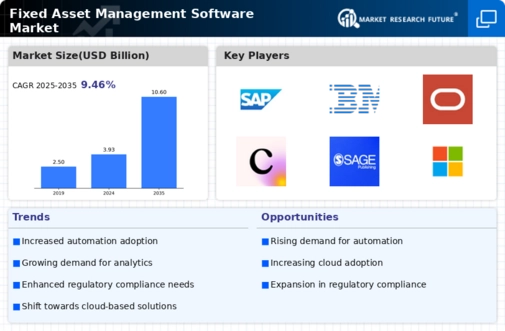
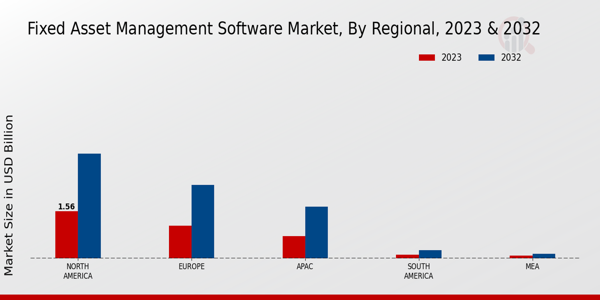


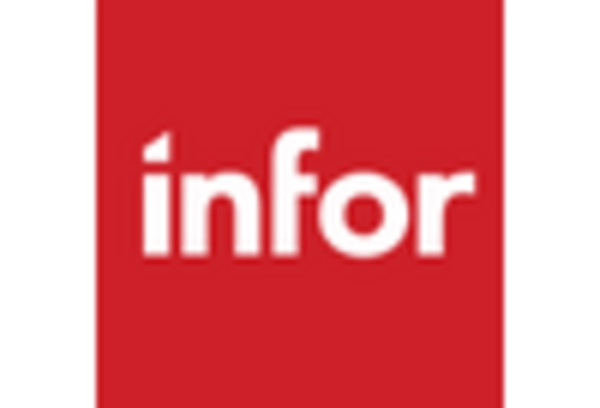
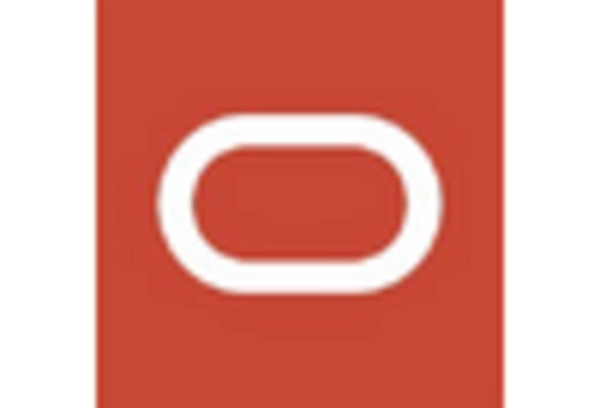
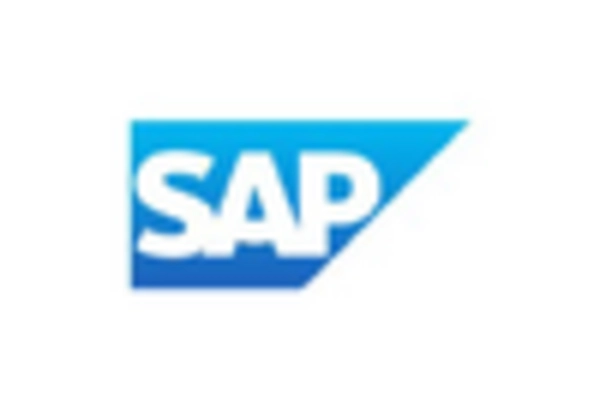
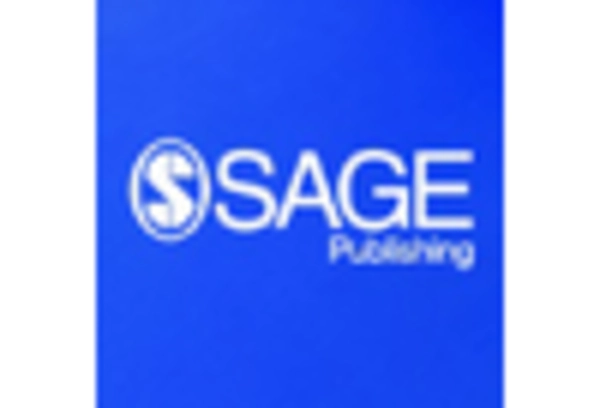

Leave a Comment